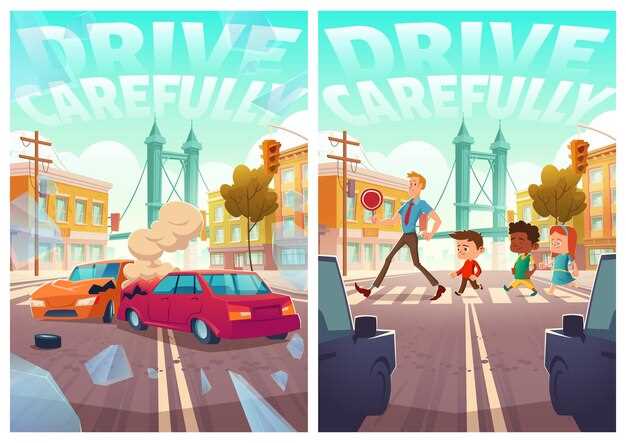
The world of street racing operates in a shadowy realm, distinctly marked by its underground nature and often at odds with the principles of legality. While some enthusiasts revel in the thrill of unsanctioned races that unfold under the cover of darkness, others advocate for organized events that promise safety and regulation. This conflict serves as a reflection of broader societal values, where the allure of rebellious freedom clashes with the necessity of order and control.
At the heart of this cultural divide lies a debate over the essence of speed, community, and competition. Street racing embodies a form of self-expression, drawing participants into a tight-knit society that thrives on adrenaline and camaraderie. Yet, the lack of oversight can lead to dangerous consequences, prompting a push for sanctioned events that offer participants a chance to race legally. These events not only provide a safer environment but also elevate the perception of racing, transitioning it from a fringe activity to a recognized sport.
As the lines between underground racing and organized events continue to blur, the conversation surrounding legality becomes increasingly complex. Participants often find themselves at a crossroads, torn between the desire for freedom and the recognition of societal norms. Understanding this cultural conflict sheds light on the motivations and challenges faced by racers, setting the stage for a deeper exploration of their world and the evolving dynamics of speed, community, and legality.
The Thin Line Between Illegal Street Racing and Organized Events

In the realm of automotive culture, the dichotomy between illegal street racing and sanctioned racing events represents a complex interaction shaped by legality and community dynamics. Underground racing often thrives in urban environments, where adrenaline and rebellion fuel the desire for speed and competition. These illicit gatherings attract participants seeking the thrill of racing in an unregulated setting, bypassing traditional legal frameworks.
On the contrary, organized events, which occur under official regulation, offer a structured environment for racing enthusiasts. These sanctioned competitions prioritize safety, fairness, and legality, drawing drivers who aim to showcase their skills responsibly. While participants may share a passion for speed, the motivations and consequences of illegal racing versus organized events differ significantly.
The thrill of underground racing comes with risks that extend beyond the participants. Illegal races can disrupt public safety, disrupt traffic, and pose risks to innocent bystanders. Law enforcement frequently intervenes, leading to legal repercussions for drivers and spectators alike. In contrast, organized events often cultivate community and camaraderie, promoting responsible behavior among participants and transforming the racing culture to be more inclusive and accessible.
Despite their differences, both forms of racing exist within a continuum, with many drivers navigating back and forth between the two worlds. The allure of illegal street racing can sometimes overshadow the merits of organized events, especially for those seeking an escape from societal norms. However, as the culture of racing evolves, there is a growing recognition of the importance of legality and community engagement in fostering a sustainable racing scene.
Risks and Legal Consequences of Underground Racing
Underground racing presents significant risks for participants and the public. The thrill of speed often overshadows safety considerations, leading to dangerous situations. High speeds in uncontrolled environments increase the likelihood of accidents, potentially resulting in severe injuries or fatalities. Additionally, reckless driving poses a threat to innocent bystanders and other road users.
Legal consequences of participating in underground racing can be severe. Law enforcement agencies frequently monitor areas known for these activities, leading to arrests and citations for participants. Legal repercussions can include hefty fines, vehicle impoundment, and even imprisonment, depending on the severity of the offense.
Moreover, underground racing typically violates various traffic laws, such as speeding, reckless driving, and driving without a valid license. Each of these infractions adds to the potential legal burden faced by racers. Individuals caught participating in such events may also face civil liabilities, such as lawsuits from affected parties in case of accidents.
In summary, while underground racing might allure speed enthusiasts, the inherent risks and legal ramifications should not be underestimated. The combination of personal injury, public danger, and potential legal troubles paints a grim picture for those involved in this subculture.
How Communities Navigate the Tension of Racing Cultures

Communities often find themselves at the intersection of underground racing cultures and sanctioned motorsport events, creating a complex dynamic that reflects broader societal tensions. The allure of street racing, characterized by its spontaneity and adrenaline-fueled excitement, attracts a diverse group of enthusiasts. However, this underground scene frequently clashes with conventional motorsport practices that emphasize safety, regulation, and community approval.
In navigating these conflicting cultures, communities employ various strategies to reconcile the differences. Local governments and law enforcement agencies often engage with racing groups to establish designated areas for legal racing events, transforming previously illicit activities into sanctioned gatherings. These initiatives create opportunities for racers to showcase their skills in a controlled environment, limiting the dangers associated with illegal street racing.
Moreover, collaborations between racing clubs and community organizations foster dialogue and mutual understanding. By organizing educational workshops and open forums, community leaders address concerns about safety, noise, and public perception. This proactive approach helps demystify underground racing and highlights its cultural significance, allowing residents to appreciate the passion behind it.
Additionally, social media plays a crucial role in bridging the gap between these racing cultures. Online platforms facilitate communication among racers, enabling them to share their experiences and promote upcoming events. This digital space not only enhances camaraderie within the underground scene but also invites outsiders to engage respectfully, creating a more inclusive racing community.
Ultimately, the navigation of racing cultures within communities highlights a broader narrative about balancing excitement and safety. By embracing dialogue, fostering education, and providing alternative spaces for racing, communities can honor the thrill of underground racing while promoting responsible practices and inclusivity.
